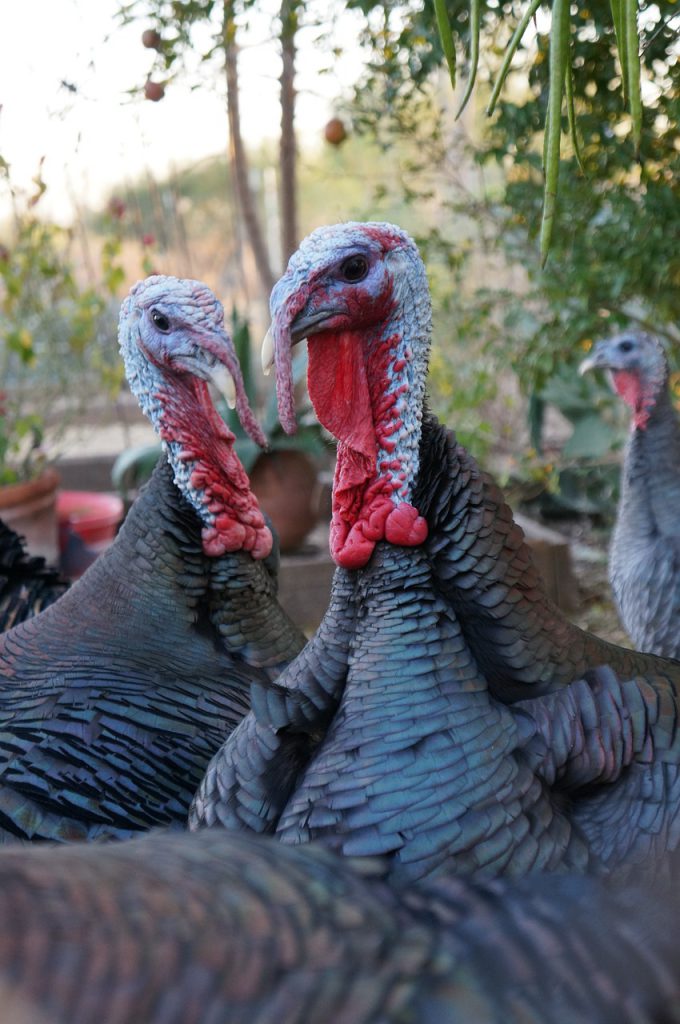
With Thanksgiving coming, there is lots of talk about turkeys. So on this Friday’s virtual field trip, we’ll look at the turkeys who live in southeast Ohio’s woods. Read on!
Attend the virtual field trip, Friday, Nov. 20 at 10:30am. We look at turkey adaptations and habitats.
Learn some turkey terms. Could you recognize toms
, hens, jakes or poults?Dig and gobble like a turkey. Here are our tips on how to find food like a turkey, and how to call a turkey.
Turkey Virtual Field Trip, Friday, Nov. 20 at 10:30am
Friday, November 20, 10:30am
Every Friday from 10:30 to 11-ish am, we hold a Zoom call live from the woods. This week, we’ll learn about how wild turkeys are adapted to live in southeast Ohio.
You’ll receive the link for the Zoom call in your email. The same link works each Friday.
~~We’ll post the recording of the field trip here the following Monday~~
Turkey Terms:


Hen- A female turkey 
Tom- A male turkey


Funny Faces
A tom turkey looks different then a hen. A tom’s head has more lumpy parts. When a tom gets excited
, these parts fill with blood. They turn red.A female turkey face 
A male turkey face
The snood is the flap of skin over the turkey’s beak. The wattle is the flap of skin under the beak, attached to the neck.
Baby Turkeys

Baby turkeys are called poults. They are bigger than baby chicks. Their necks are longer too. Poults eat bugs and grass.
Fun turkey facts
- Turkeys can fly for short burst, about 100 yards.
- Wild turkeys sleep, or roost, in the tops of trees overnight.
- Turkeys do not migrate in winter. Instead, they have layers of down feathers against their skin to keep them warm.
Your turn: Acting Like Turkeys
Do you like to see wildlife? Try thinking and acting like a turkey next time you’re outside!
It sounds silly, but putting yourself in an animal’s place might help you understand them better. Here are two ideas.
Look for turkey food
Turkeys use their feet to to dig up acorns, nuts, and seeds. Turkeys love to find all sorts of bugs and worms to eat!

Our feet look much different than turkeys’, and we have hands instead of wings! We cut the nails on our fingers and toes, so they aren’t as sharp as turkeys. But maybe we can search for bugs and nuts on the forest floor like turkeys do.
Using your hands to scatter the leaves and lightly dig, can you find any turkey food in the woods near you? What tasty turkey treats do you find? Was it hard to find food like you were a turkey?
Keep an eye out for scratched up leaves on the ground–it may be a sign turkeys were there recently.
Try to get a turkey’s attention
A tom’s feathers are more colorful than a hen’s. He can spread his tail feathers open to look like a fan. The fan makes the tom look bigger and more impressive. Toms shake their feathers to make hens notice them.
In the video above, you can watch a tom displaying his feathers and calling out to a hen. Can you count how many different calls you hear?
I’ve never heard anything like a turkey call. It is such a unique sound. Turns out that humans can use their voices to make sounds just like turkey calls, though. Why might humans want to imitate the sounds of turkeys?
It might take some practice, but you could perfect the screech and gobble of a turkey. Watch the video below of the world champion turkey caller to learn how to pretend to be a turkey. If you become a calling expert like Preston, we’d love to hear your best turkey call on the virtual field trip on Friday!
If you are in the right place at dawn or dusk, you might hear a turkey gobble back to you! However, don’t gobble at them too many times, because it may bother them.